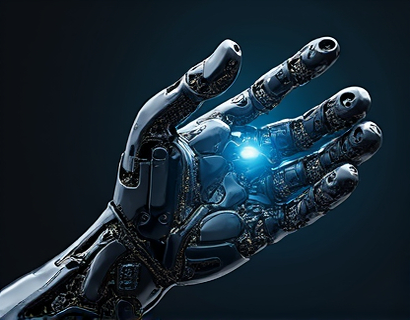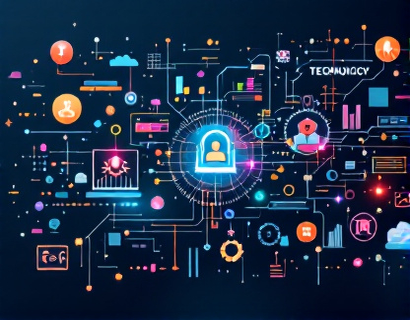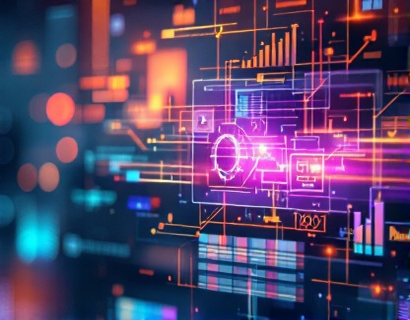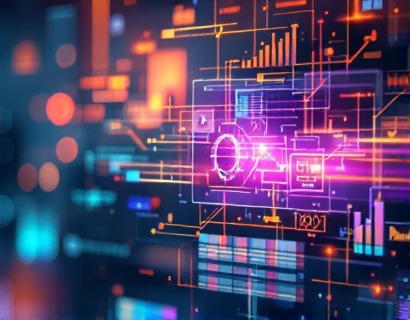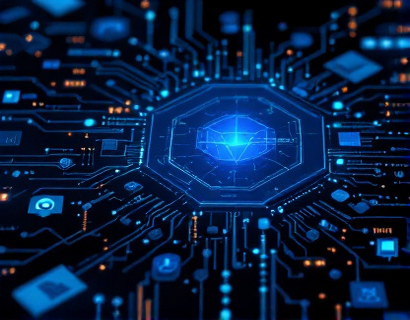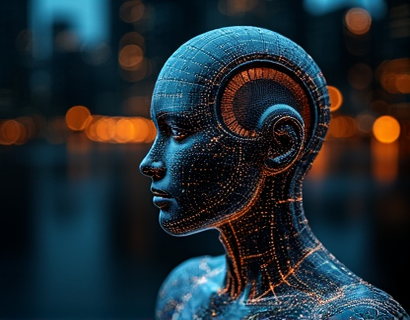The Revolutionary Fusion of Cryptocurrency and AI: Shaping the Future of Digital Services
The intersection of cryptocurrency and artificial intelligence (AI) is giving birth to a new era of digital services, redefining how we interact with technology and each other. This fusion is not just a technological advancement but a paradigm shift that promises to enhance efficiency, security, and user experience across various sectors. As we delve into this topic, we will explore the latest advancements in tech-driven solutions that are transforming the landscape of digital innovation. This article is designed to provide deep insights for tech enthusiasts and professionals, offering a comprehensive look at how crypto and AI are converging to create next-generation digital services.
The concept of integrating cryptocurrency with AI is not new, but recent developments have accelerated its adoption and practical applications. Cryptocurrency, with its decentralized and secure nature, provides a robust foundation for AI-driven solutions. AI, on the other hand, brings intelligence, adaptability, and automation to the table. When combined, these technologies can create systems that are not only more secure and efficient but also capable of learning and evolving over time.
Enhanced Security through Cryptographic Techniques
One of the most significant benefits of using cryptocurrency in AI applications is the enhanced security it offers. Cryptographic techniques, such as blockchain, ensure that data is immutable and transparent. This is particularly crucial in AI systems where data integrity and privacy are paramount. By leveraging blockchain, AI models can be trained on decentralized datasets, reducing the risk of data breaches and ensuring that user information remains confidential.
For instance, in financial services, AI algorithms can be used to detect fraudulent transactions in real-time. By integrating blockchain, these transactions are recorded in a tamper-proof ledger, providing an additional layer of security. This combination not only enhances trust but also reduces the operational costs associated with traditional security measures.
Optimized Data Processing and Machine Learning
AI relies heavily on data to function effectively. The quality and quantity of data directly impact the performance of AI models. Cryptocurrency, through its decentralized nature, can facilitate the creation and sharing of large datasets without compromising privacy. Smart contracts can automate the process of data sharing, ensuring that only authorized parties access specific information.
Moreover, AI algorithms can be optimized using cryptocurrency-based incentives. For example, in a decentralized network, miners or validators can be rewarded with cryptocurrency for contributing computational resources to train AI models. This not only ensures a steady supply of processing power but also aligns the interests of network participants with the goals of the AI system.
Automated and Intelligent Trading Systems
The finance sector is one of the most prominent areas where the fusion of cryptocurrency and AI is making a significant impact. Automated trading systems, powered by AI, can analyze vast amounts of market data to make informed trading decisions. These systems can operate 24/7, adapting to market conditions in real-time and executing trades with precision.
Cryptocurrency exchanges are increasingly adopting AI-driven trading bots that use machine learning algorithms to predict market trends and execute trades automatically. These bots can identify patterns and anomalies in the data, allowing for more accurate and timely decision-making. The use of cryptocurrency in these systems ensures that transactions are fast, secure, and cost-effective, reducing the friction typically associated with traditional trading platforms.
Personalized User Experiences
AI-driven personalization is another area where the combination of cryptocurrency and AI is revolutionizing digital services. By analyzing user behavior and preferences, AI can provide tailored recommendations and experiences. In the context of cryptocurrency, this means creating personalized financial management tools that adapt to individual user needs.
For example, a digital wallet powered by AI can learn a user's spending habits and suggest optimal investment strategies or budgeting plans. The use of cryptocurrency ensures that these recommendations are based on real-time data and are executed instantly, providing a seamless and efficient user experience. This level of personalization not only enhances user satisfaction but also increases the adoption of digital financial services.
Supply Chain Optimization
Supply chain management is a complex process that involves multiple stakeholders and a vast amount of data. The integration of cryptocurrency and AI can streamline this process, making it more transparent and efficient. Blockchain can be used to track the movement of goods from production to delivery, ensuring that each step is recorded and verifiable.
AI algorithms can analyze this data to optimize logistics, predict demand, and identify bottlenecks in the supply chain. For instance, AI can predict when a particular product is likely to run low in inventory, triggering automated orders to replenish stock. The use of cryptocurrency in these transactions ensures that payments are secure and instantaneous, reducing the need for intermediaries and lowering transaction costs.
Decentralized Identity Management
Identity verification is a critical aspect of many digital services, and the fusion of cryptocurrency and AI is transforming how identities are managed. Decentralized identity solutions use blockchain to create secure and self-sovereign identity systems. Users have control over their personal data, deciding who can access it and for what purpose.
AI can enhance these systems by analyzing behavioral patterns and biometric data to verify identities more accurately. This combination not only improves security but also simplifies the user experience, eliminating the need for multiple passwords and verification steps. For example, a user can authenticate themselves using a biometric scan, and AI can verify this against a decentralized database, ensuring both security and convenience.
Challenges and Considerations
While the potential of combining cryptocurrency and AI is vast, there are several challenges that need to be addressed. One of the primary concerns is regulatory compliance. The decentralized nature of cryptocurrency and the complex algorithms of AI can make it difficult to navigate regulatory frameworks. Both industries must work together to develop standards and guidelines that ensure compliance while fostering innovation.
Another challenge is the technical complexity involved in integrating these technologies. Developing AI models that can operate on decentralized networks requires specialized knowledge and resources. Additionally, ensuring the scalability and performance of these systems is crucial for widespread adoption. Continuous research and development are necessary to overcome these technical hurdles.
Future Prospects
The future of digital services powered by the fusion of cryptocurrency and AI is promising. As technology advances, we can expect to see more sophisticated and seamless integrations. For instance, the development of quantum computing could further enhance the capabilities of AI algorithms, making them more efficient and powerful. Similarly, advancements in blockchain technology, such as layer 2 solutions, can improve the scalability and speed of decentralized networks.
Moreover, the increasing awareness and acceptance of cryptocurrency and AI among the general public will drive more businesses to adopt these technologies. This shift will lead to a more interconnected and intelligent digital ecosystem, where services are more secure, personalized, and efficient.
In conclusion, the fusion of cryptocurrency and AI is not just a technological trend but a transformative force that is reshaping the future of digital services. By leveraging the strengths of both technologies, we can create systems that are more secure, efficient, and user-friendly. As we continue to explore and innovate in this space, the possibilities are endless, and the impact on various industries will be profound.








